BLCU Continuing Education College
Chinese Language Education Platform

BLCU Continuing Education College
Chinese Language Education Platform

 HSK 3 Reading Section
HSK 3 Reading Section
Overview
The reading section of HSK 3 comprises three parts, each designed to evaluate different reading skills. With a total of 30 questions, this section tests learners' ability to understand and process written Chinese at an intermediate level.

Reading Part 1: Sentence Matching
In Part 1, candidates are presented with conversations where sentences are separated. Their task is to match the given sentence with its preceding or following sentence from the provided options. This part focuses on understanding the context and logical sequence of conversations.
Tips for this section include:
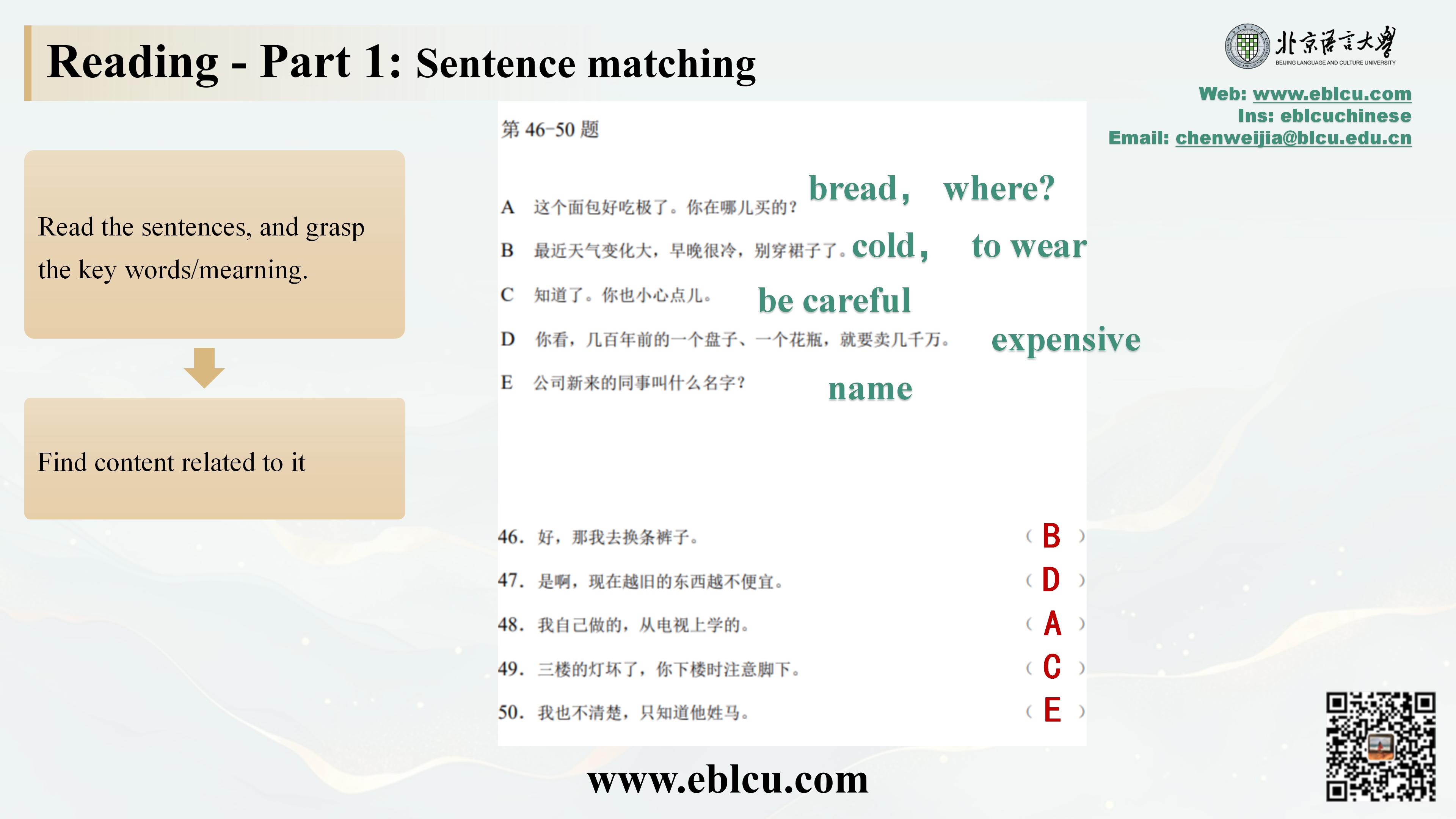
Reading Part 2: Blank Filling
Part 2 consists of 10 questions based on complete sentences and short conversations, each containing a blank space. Candidates must choose the most appropriate word from five options to fill in the blank. This part emphasizes vocabulary knowledge and basic grammar.
Strategies for success include:
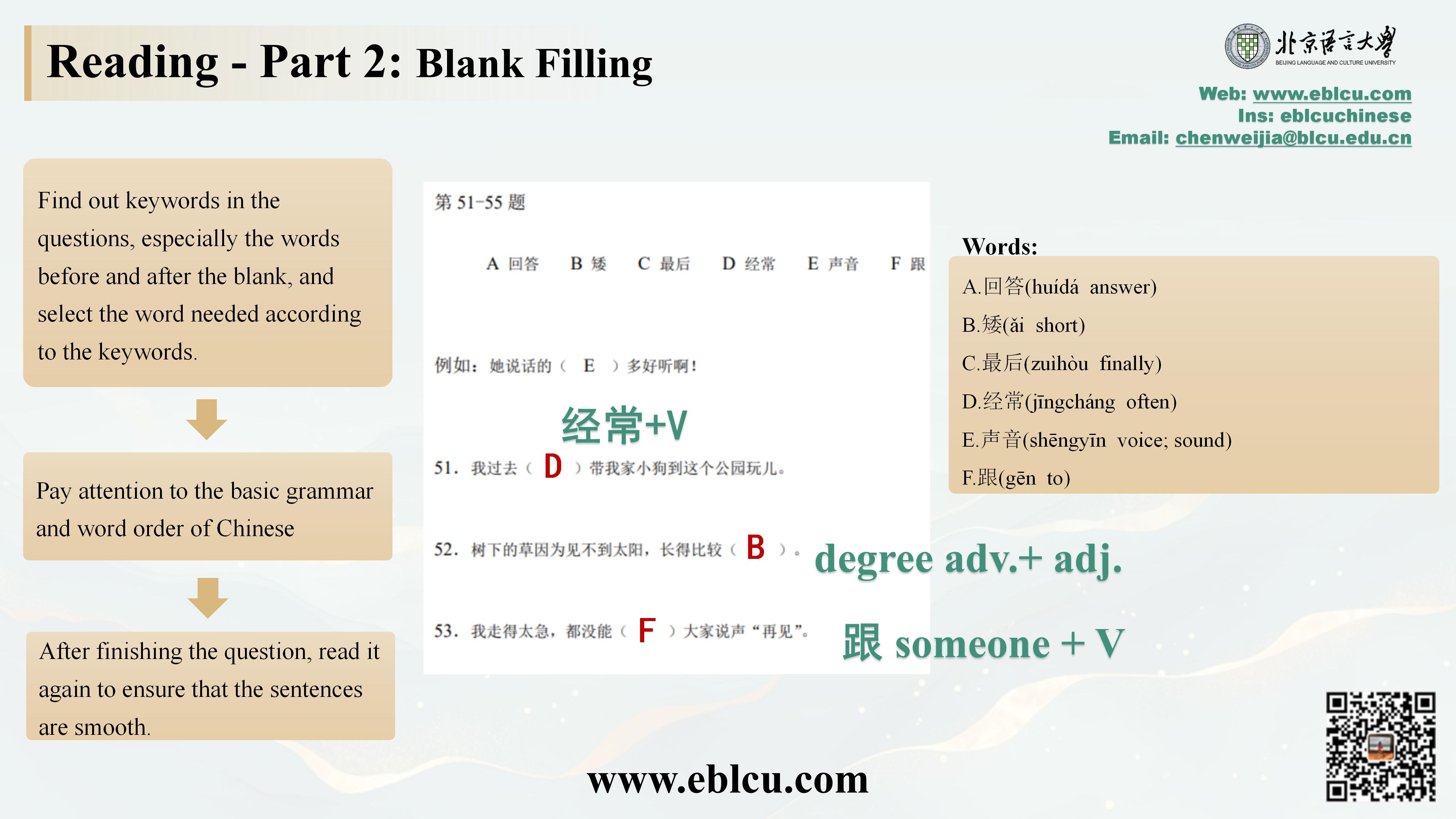
Reading Part 3: Reading Comprehension
Part 3 tests reading comprehension through short passages followed by a question. Candidates must find the answer to the question or select the option that matches a keyword from the passage among three provided choices. This part assesses overall understanding and detail recognition.
Effective approaches include:
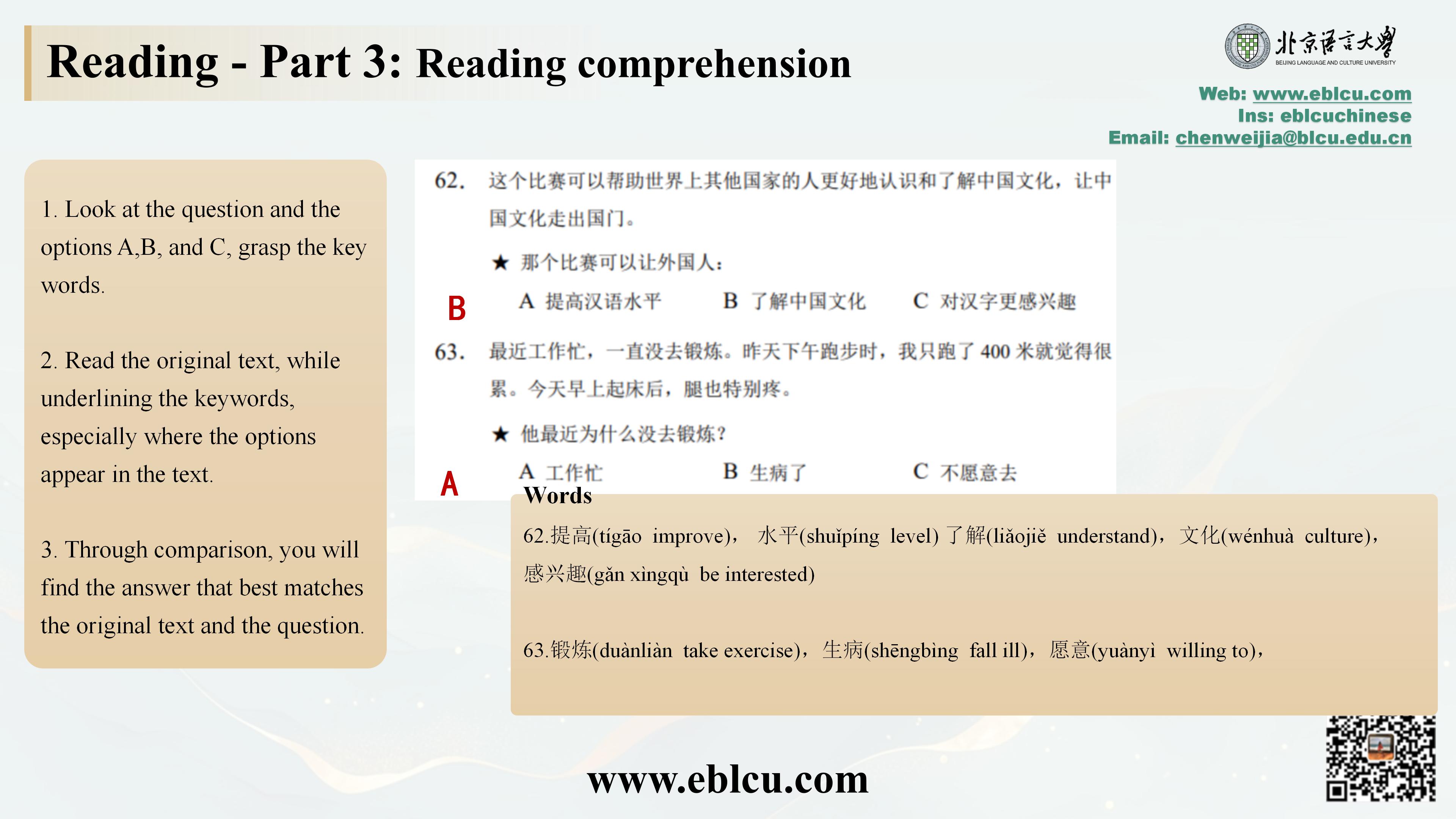
HSK3 Writing Section Overview
The writing section of HSK 3 consists of two parts, designed to evaluate learners' writing skills and character recognition. With a total of 10 questions, this section aims to test candidates' ability to form sentences correctly and write Chinese characters based on pinyin.

Part 1: Arrange the Word Order in the Sentence
In Part 1, candidates receive 4-6 words or phrases and are tasked with arranging them into a sentence that reads smoothly. This part focuses on sentence structure and word order.
Tips for success include:
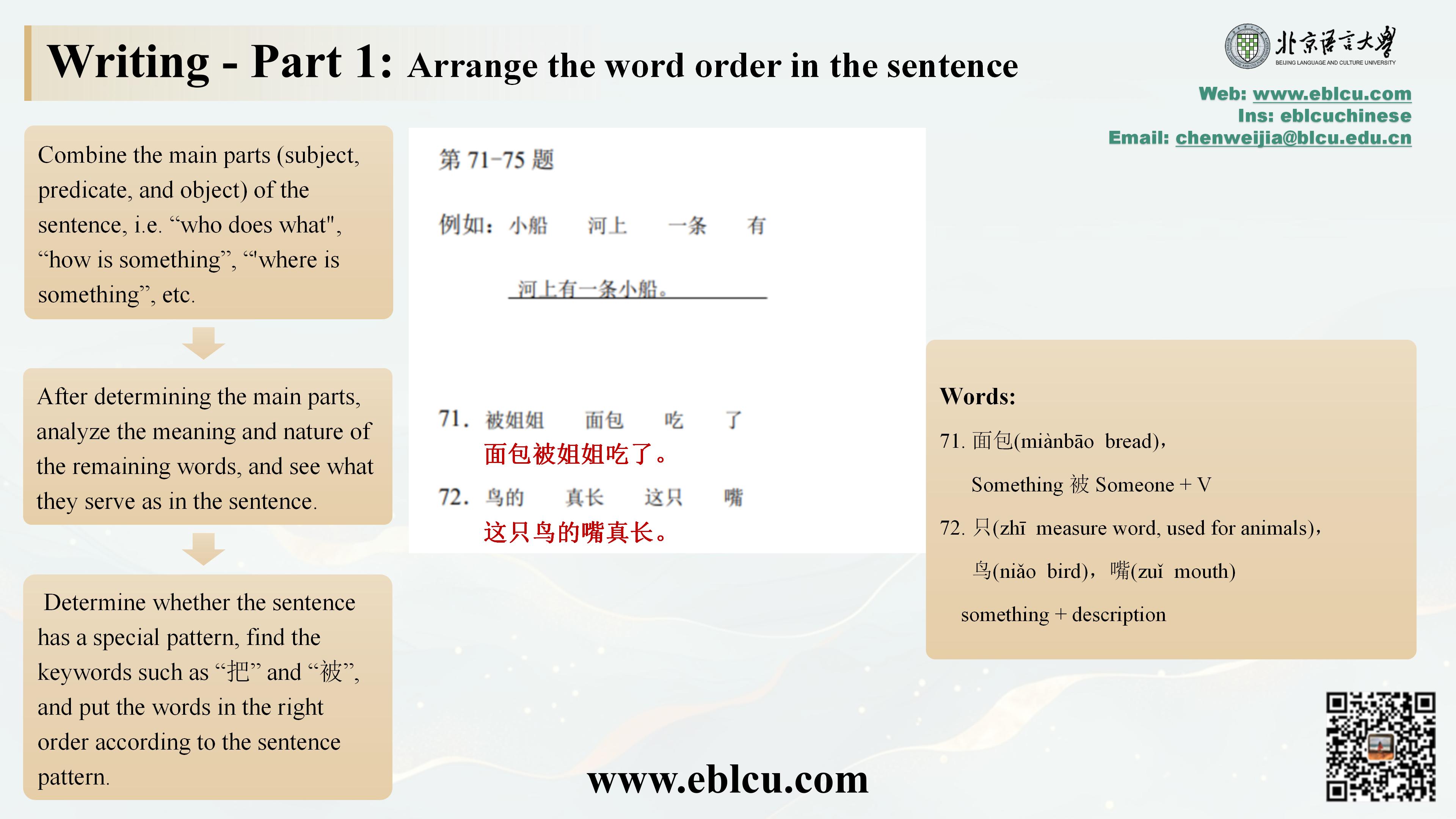
Part 2: Write Characters According to the Pinyin
Part 2 requires candidates to fill in blanks with Chinese characters based on provided pinyin. This part emphasizes character recognition and writing skills.
Strategies for success include:

Overall Tips for HSK 3
To excel in the HSK 3 reading and writing sections, candidates should:
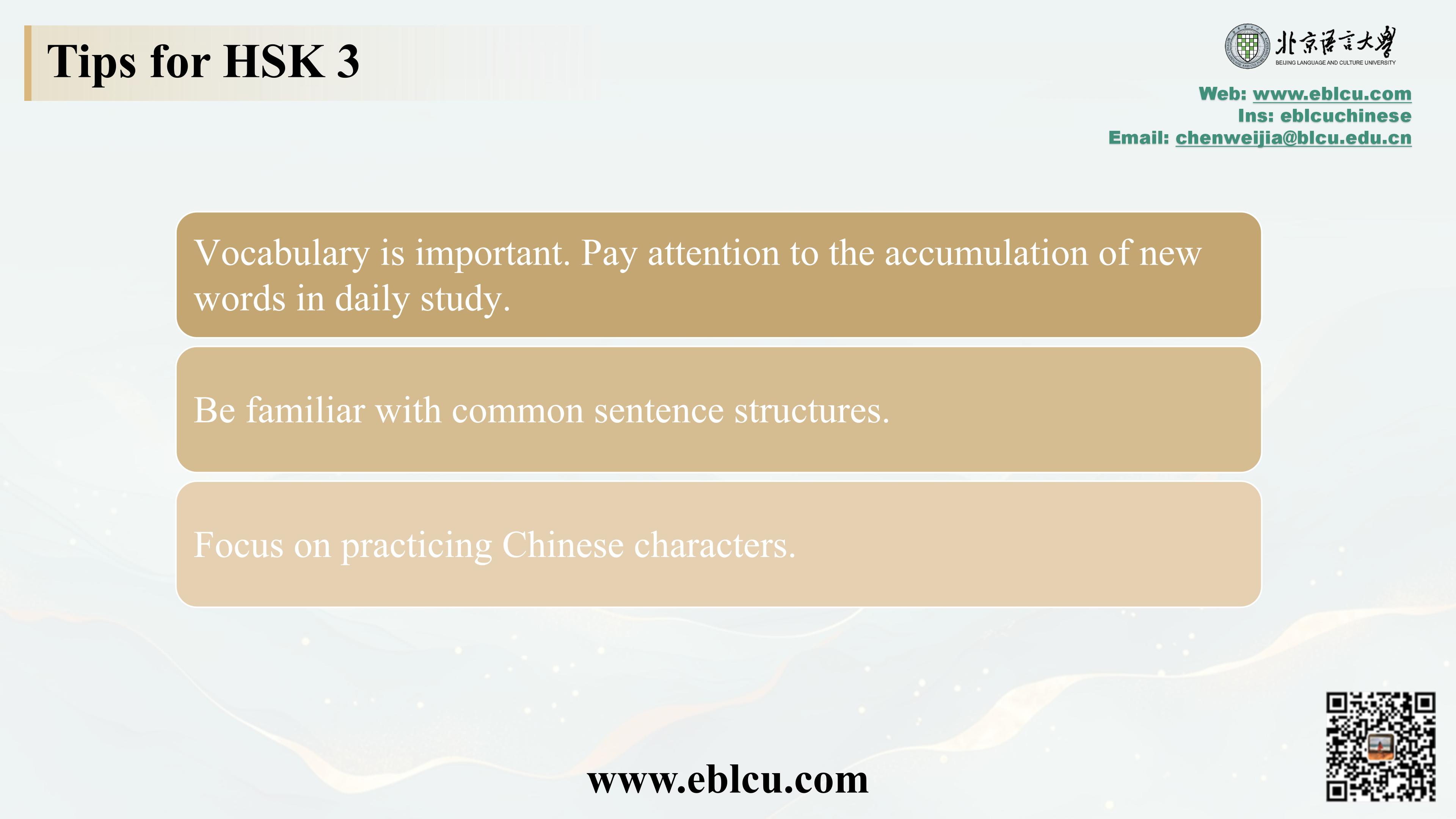
In conclusion, the HSK 3 reading and writing sections provide a comprehensive assessment of learners' intermediate-level Chinese proficiency. By understanding the format and strategies for each part, candidates can effectively prepare for and succeed in this important exam.
Course Information (BLCU Online)
You can also click here to watch the HSK Level 3 open class video recording.
Check introduction to HSK 1 exam and introduction to HSK 2 exam.
The HSK 4 open class will be held on 12th July. Click here or scan the QR code in the following picture to register.

BLCU Online Course is designed according to the HSK system, helping students to improve their Chinese language skills in four areas: listening, speaking, reading and writing. It is suitable for non-native speakers who want to improve their Chinese in general or for those who want to improve their Chinese language skills first and take the HSK exam in the future. You can choose to join a group or take the classes 1 on 1 according to your level and learning need.
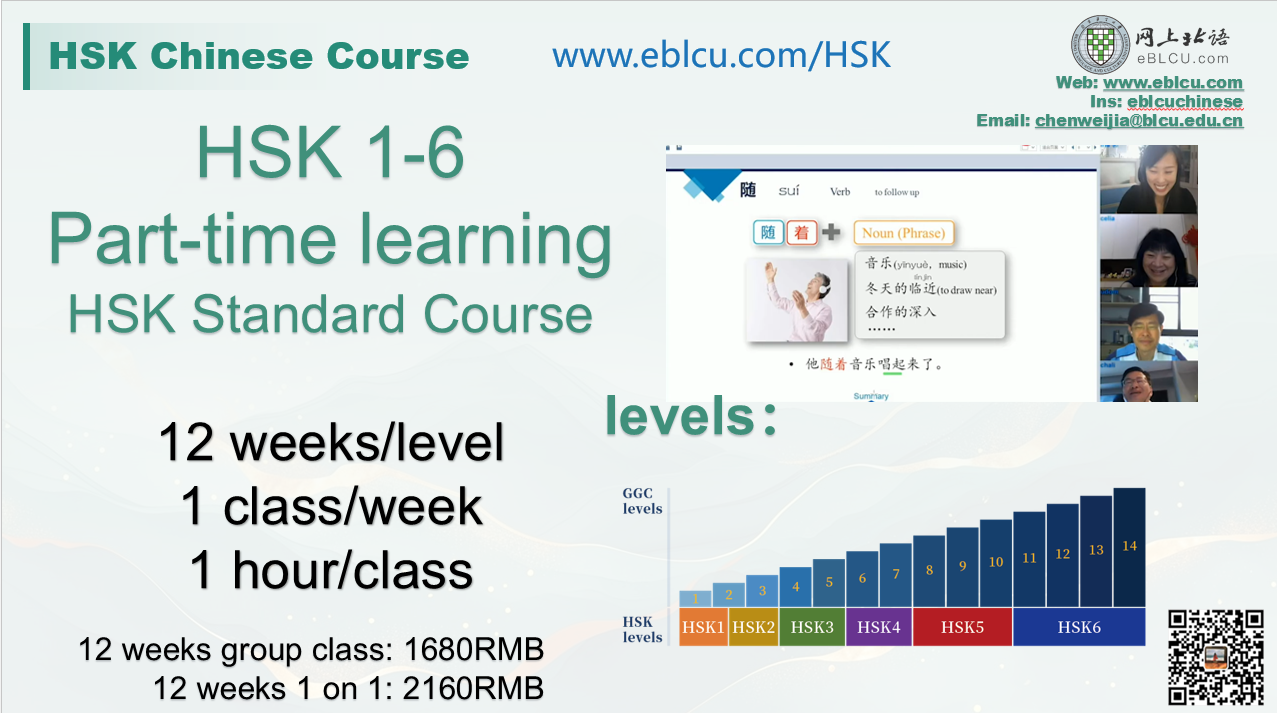
FAQs
1. Registration Deadline:
Rolling throughout the year
Group class: Wait for 1-4 weeks after registration
1-on-1: Starting within 1 week after registration
2. Class Time:
8am-9pm Beijing time, 7 days a week
Group Class: Need to discuss with group members and determine a class time.
3. Not sure which course is suitable?
You can sign up for a 20 mins trial class and listen to the teacher's advice from the right side of our website.




